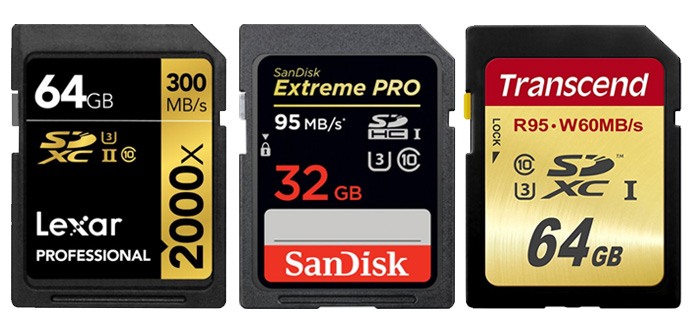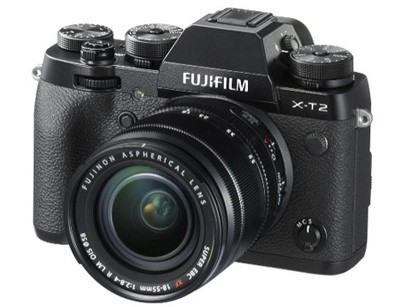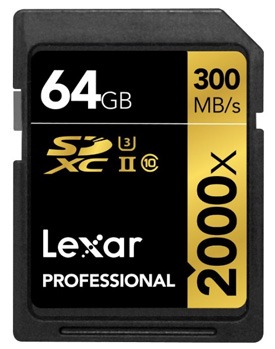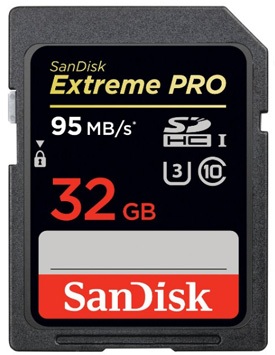Here is a list of our best memory cards for Fujifilm X-T2.
It’s got 1 x SD memory card slot, and is one of the few cameras on the market that supports UHS-II interface!
This is great news if you’re looking to get the most out of your memory cards and the camera itself, as with 4K video recording and 8fps+ burst mode, you’ll need a good memory card! You definitely don’t want to buy something cheap or from an unknown brand, as it will only result in long buffer clearing and random pauses in videos.
Speed Class of SD Cards
| Class | Speed | Our opinion |
| Class 4 | 4MB/s | Too slow for most modern cameras. Skip it. |
| Class 6 | 6MB/s | A little bit better but unless you take 3 pictures a year, skip it. |
| Class 10 | 10MB/s | Good enough for most cameras with 20+ megapixels and Full HD video. |
| U1 (UHS) | 10MB/s | Good enough for most cameras with 20+ megapixels and Full HD video |
| U3 (UHS) | 30MB/s | Perfect for fast burst cameras, Full HD at 60fps and 4K video |
As mentioned above, the Fujifilm X-T2 is UHS-II compatible and can take advantage of the extra speeds offered. Compared to UHS-I, you will get faster minimum writing and reading speeds in-camera, and also faster file transferring directly to your computer.
If you send hundreds or thousands of photos/videos to your computer on a weekly basis, UHS-II is definitely your best friend.
We don’t recommend picking a Class 4 or 6 card, as these might even result in in-camera errors since they’re not good enough. Skip these completely. Plus, the 2 memory cards we recommend are affordable anyways.
Go with a 32GB or 64GB sized card, and buy a couple of these if you need lots of storage. It’s better than buying one huge card because you risk losing all of your shots if that 1 card fails.

These are the best 2 SDHC/SDXC memory cards you can get:
Lexar Professional 300MB/s UHS-II U3
The Lexar Professional 300MB/s UHS-II U3 offers faster speeds for both writing and reading files. It’s the perfect match for any UHS-II compatible camera that records 4K or has a fast continuous shooting speed (8fps+). The buffer clearing time will be much much quicker which means you can take more shots.
Don’t have a memory card reader that supports such speeds? Luckily you get a free Lexar UHS-II reader that’ll greatly reduce the waiting time. You also get a free downloadable Imaging Rescue software. It comes in 32GB, 64GB and 128GB sizes.
You can buy it at Amazon or see more reviews here.
SanDisk Extreme Pro 95MB/s UHS-I U3
The SanDisk 64GB Extreme Pro 32GB U3 is our favorite card for UHS-I cameras, seeing as it’s inexpensive and provides writing and reading speeds near 90MB/s, but it’s still a great choice for the Fujifilm X-T2 (4K will record just as good). It’s cheaper than the one above, but remember that file transferring speeds will be slower.
The speed makes it perfect for whatever you’re doing; fast bursts with large megapixel cameras, 4K video, let alone Full HD at 60fps. It comes in 16GB, 32GB, 64GB, 128GB and 256GB sizes.
You can buy it at Amazon or see more reviews here.
Comparison of the 3 Memory Cards
| Card | Size | Speed |
| Sandisk Extreme Pro 95MB/s U3 | 32GB | Writing files: ~90MBs. Reading files: ~95MB/s |
| Lexar Professional 300MB/s U3 | 64GB | Writing files: ~240MB/s. Reading files: ~280MB/s |
What Brands are the Best?
Your photographs and videos are stored on a memory card, so you should definitely not try to save any money here by buying from unknown, cheap brands. While you save a few bucks, you probably won’t even get the advertised speeds, and are at a bigger risk of losing your shots.
We see too many beginners choosing the cheap route here, but until you transfer your shots to a computer/online, this is where they’re stored at. You want the memory card to be the most reliable piece of your equipment!
Stick to Sandisk, Lexar, Transcend, Kingston, Sony and Toshiba. There may be a few other good brands out there, but the ones we mentioned are already more than enough and offer great prices.
https://www.youtube.com/watch?v=HZSf2bKp9P0
Last Updated on September 14, 2021 by Nick Voorhees
First and foremost, I’m a husband and father. Then professionally I’m photographer, designer, blogger, and Esty store owner. My homebase is near the stunning Wasatch mountains in Utah but I love traveling with my family as part of our homeschooling journey. I also love teaching and helping out others. My faith is one of the biggest aspects of my life and brings be a consistent joy that I haven’t found in anything else. My main blog is BestPhotographyGear.com and I strive to make photography simple for anyone looking to learn or find gear for their individual needs. By nature, I like to study, research, and analyze things and I use that help provide the best advice and reviews I can.



